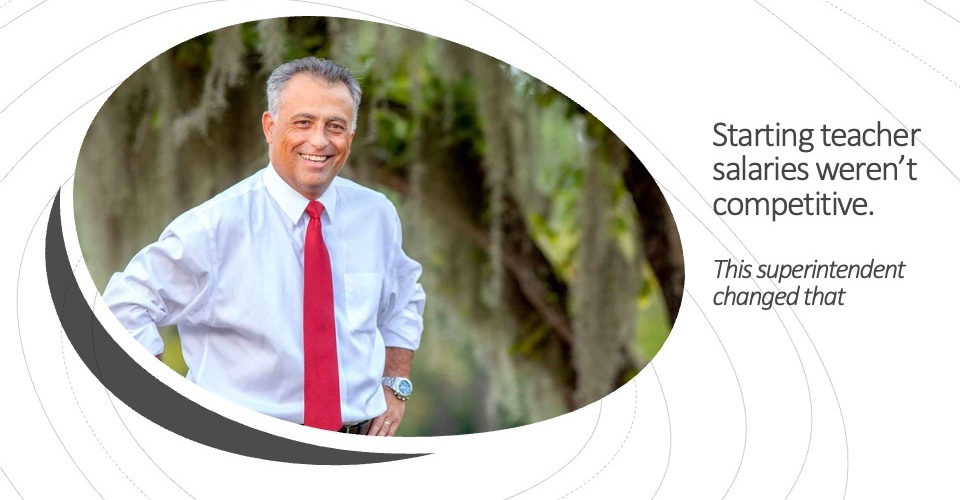We’ve all seen the statistics. Reading and math scores are down in the latest NAEP numberrs. The average scores for 9-year-old students in 2022 declined five points in reading and seven points in mathematics compared to 2020. The decline in math was the largest drop since 1990.
History scores are also dropping, and alarmingly so: In 2022, the average U.S. history score in eighth grade decreased by five points compared to 2018 and by nine points compared to 2014. The average score in 2022 is very similar to the average score from 1994, the first year the assessment was given.
Districts have been directing billions in funding and other resources to meet these declines head-on through the science of reading and other important academic initiatives. But what if we’re only addressing the symptoms and not the root cause?
‘Talking out of School’ podcast: Addressing a complexity of student needs
An alarming undercurrent to these academic declines is a massive increase in non-academic barriers to learning, manifesting in a rising tide of maladaptive behaviors across all student populations. In a recent EdWeek Research Center survey, 70% of teachers, principals, and district leaders said that students are exhibiting more disruptive behaviors than in 2019, up from 66% in December 2021.
And in the same survey, one-third of respondents said students are dysregulated “a lot more.” Our teachers are well-trained in pedagogy, instruction, and assessment. But are they prepared for the dysregulated student who is disrupting the entire classroom?
It’s easy to send that student out of the classroom, but that doesn’t help the student nor does it lessen the disruption. What about a typical student whose grades started slipping? Do they just need tutoring or is something else going on?
A tidal wave for teachers

The lack of ability to manage and support mental health challenges that students face in and outside of the classroom is impacting teachers’ abilities to provide the highest quality learning experiences. Almost seventeen of students under 18 years of age have at least one diagnosed mental health condition, and roughly half of them receive no treatment such as counseling or other interventions. How this plays out in our classrooms should raise significant concerns for educators and school leaders.
Many school districts desire inclusive classroom environments where students with and without mental health conditions and other specialized needs are learning together. The fact is that most students with diverse learning needs spend the majority of their time in general ed classrooms.

In the absence of preservice training or coaching devoted to behavioral and emotional issues, our teachers are left to improvise and create untested responses to the behavioral challenges they face daily. This is not a new challenge. In 2019, a report by the National Center for Learning Disabilities and Understood stated that only 17% of general education teachers feel “very well prepared” to teach children with mild to moderate learning disabilities.
Moreover, 98% of the nation’s schools report special education teacher shortages, with the largest 200 cities in the U.S. reporting special education as being the area with the greatest shortage. In other words, we are losing our special education teachers and our general education teachers are not trained to address students with special needs. Throwing hundreds of millions of dollars at the science of reading initiatives will not make this challenge go away.
The growing wave of mental health conditions and behavioral challenges can feel like a tidal wave for teachers who feel unprepared and overwhelmed—more children with mental health challenges; more students with specialized learning needs in the general education setting; fewer specialized teachers. Once again, we have a math problem.
How to unlock learning for all
As chief administrators in some of our nation’s largest school districts in the country, we have seen and lived these challenges firsthand. Having visited over 60 school districts and over 1,000 classrooms, the way forward is clear to us.
Much has been made of the pending funding cliff. District leaders we speak with are naturally hesitant to begin programs that could lose funding in 18 months. Reframed, this remaining funding should be looked at as an opportunity to jumpstart professional learning and development, investing in our teachers in the areas where they face their biggest challenges and their most significant frustrations.
So, what can we do? First, light- to medium-scale self-care and wellness programs for educators should be table stakes. Next, address the non-academic barriers to learning by empowering and equipping school teams with practical, evidence-based tools to anticipate and defuse behaviors that are disruptive to learning, and to identify signs of mental health challenges. Not just once. Embed these strategies in the new-teacher training curriculum, make it part of annual training followed by coaching, and bring in third-party experts in these fields to avoid overstaffing and overtaxing your existing trainers.
These strategies do not require ongoing stimulus influx to fund. Using the remaining funding to get them “in the water” is the best way to lower the rising tide of classroom disruption and teacher dissatisfaction. By addressing these non-academic barriers, we can unlock learning for all students.
Brent Jones is the superintendent of Seattle Public Schools and is dedicated to making sure all students thrive by transforming organizational culture and redesigning PreK-12 systems and supports. With extensive public sector expertise in strategic planning, community engagement, change management, and human resources, Dr. Jones has demonstrated experience creating the right conditions and systems for advancing educational justice.
Robert Avossa is a senior advisor to FullBloom, a company that annually supports more than 150,000 children and 25,000 educators in over 1,100 school districts through its Catapult Learning and Specialized Education Services, Inc. (SESI) divisions. He spent 25 years as a teacher, principal, executive leader, and school superintendent in Florida (Palm Beach), North Carolina (Charlotte-Mecklenburg), and Georgia (Fulton).









